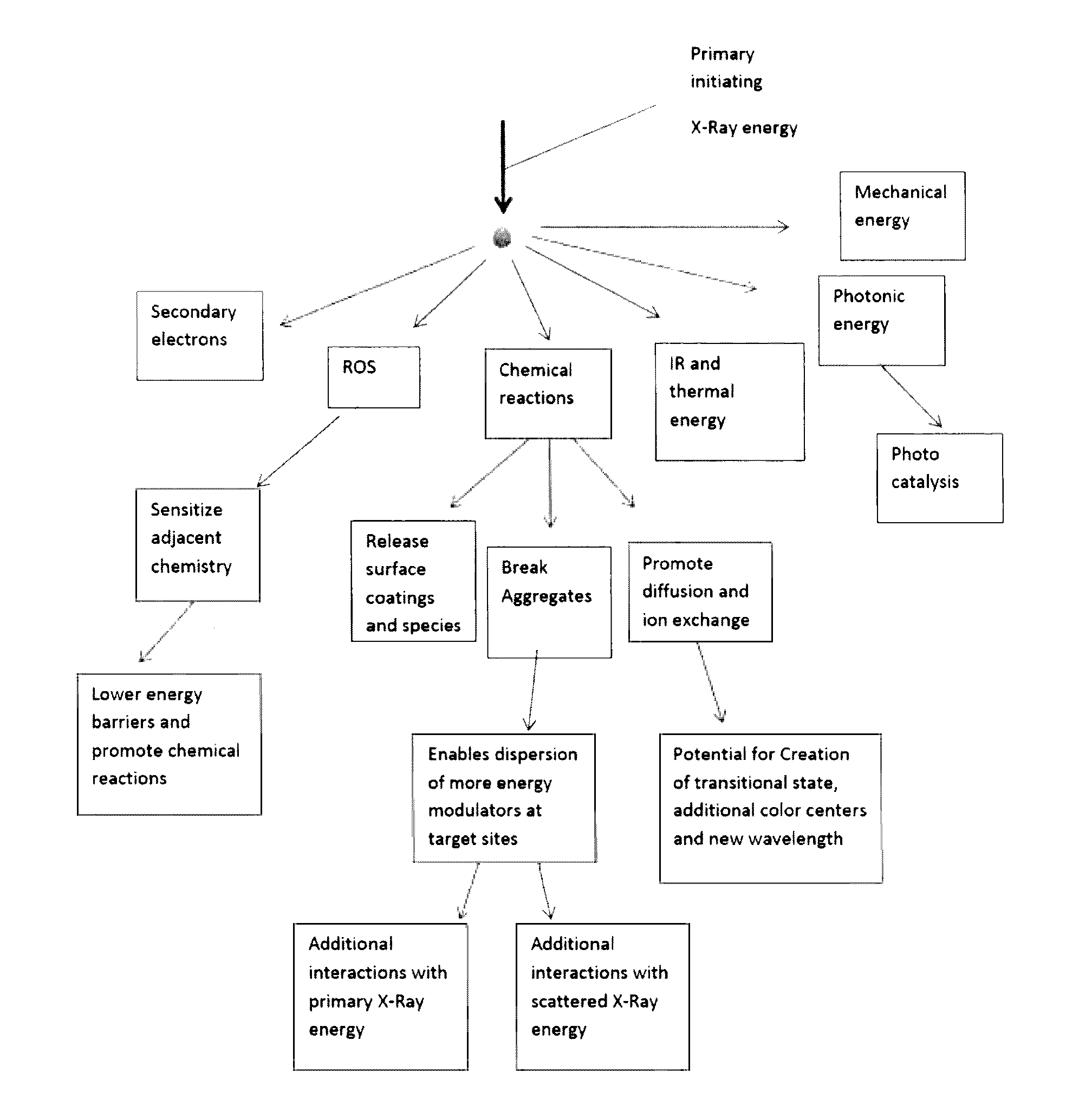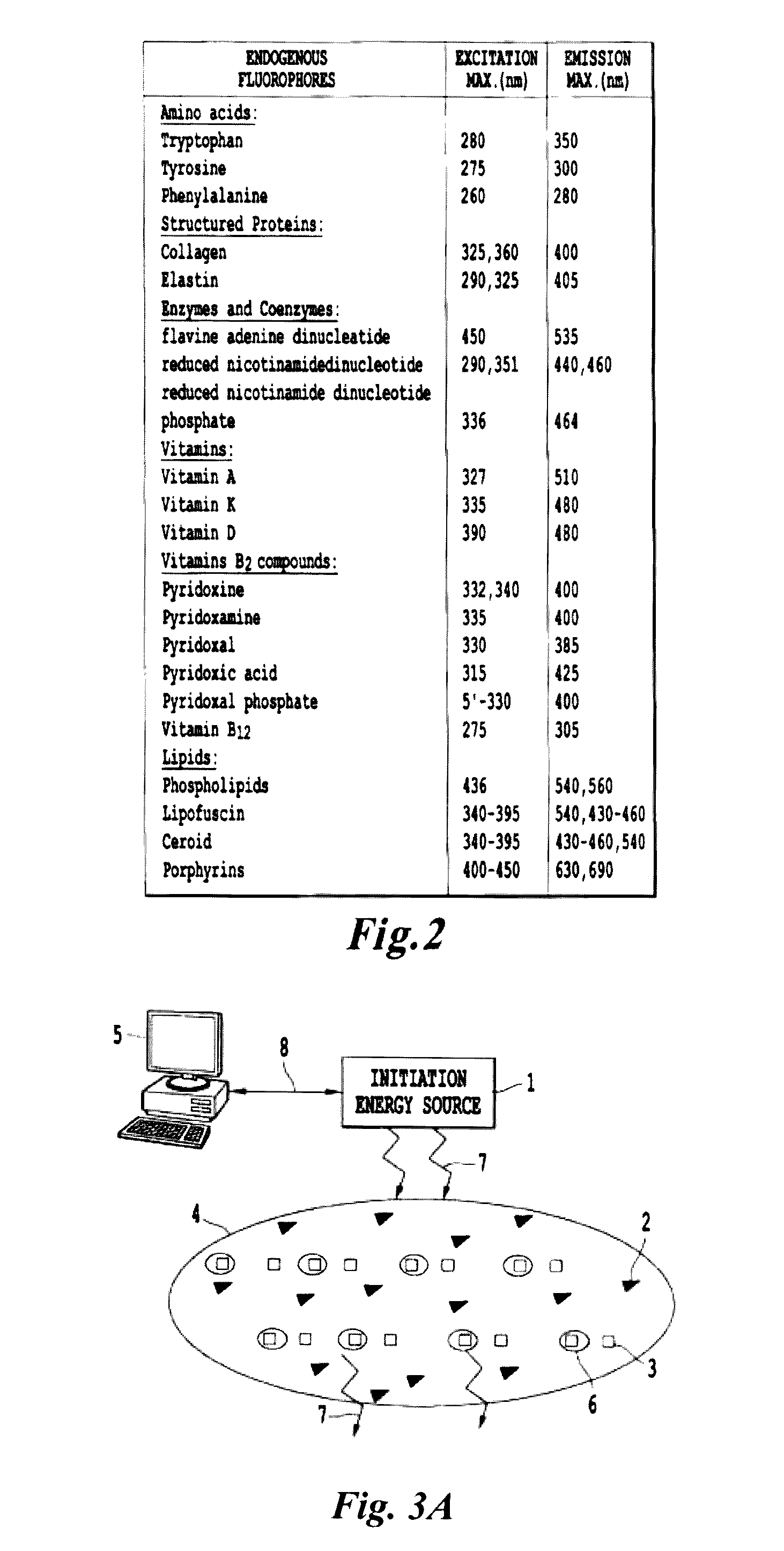Interior energy-activation of photo-reactive species inside a medium or body
a technology of interior energy and photo-reactive species, which is applied in the direction of therapy, other blood circulation devices, water treatment compounds, etc., can solve the problems of unattractive use of solvent based products in adhesive and surface coating applications, unsuitable overheating of the medium to be sterilized, and conventional sterilization
- Summary
- Abstract
- Description
- Claims
- Application Information
AI Technical Summary
Benefits of technology
Problems solved by technology
Method used
Image
Examples
working examples
[0313
[0314]To demonstrate the present invention, an adhesive chemistry was made adding 75% by weight of PUMA 92-056 (from Rahn Corp) to 20% of TriMethyl-Trimethylolpropane-Trimethacrylate (TMPTMA) from BASF and a 5% by weight of photo-initiator Darocur 1173 from BASF. The chemistry was mixed with various phosphors (described below) ranging from 6% by weight to 20% by weight. The mixture was then stirred thoroughly and stored in a light-tight container.
[0315]There were three sets of phosphors evaluated. The first set of phosphors included a 50%-50% mixture of the Flamingo-phosphor and the Green-Phosphor. The second set of phosphors consisted of a 50%-50% mixture of the Red-phosphor and the Yellow-Phosphor. The third set of phosphors consisted of a 25% of the Red-phosphor, 25% of the Yello-phosphor, 25% of the Flamingo-phosphor, 25% of the Green-phosphor.
[0316]Furthermore, a fourth set of phosphors included a mixture of 50% of LaOBr and 50% of YTaO4. The fourth set of phosphors were p...
PUM
| Property | Measurement | Unit |
|---|---|---|
| distances | aaaaa | aaaaa |
| distances | aaaaa | aaaaa |
| distances | aaaaa | aaaaa |
Abstract
Description
Claims
Application Information
 Login to View More
Login to View More - R&D
- Intellectual Property
- Life Sciences
- Materials
- Tech Scout
- Unparalleled Data Quality
- Higher Quality Content
- 60% Fewer Hallucinations
Browse by: Latest US Patents, China's latest patents, Technical Efficacy Thesaurus, Application Domain, Technology Topic, Popular Technical Reports.
© 2025 PatSnap. All rights reserved.Legal|Privacy policy|Modern Slavery Act Transparency Statement|Sitemap|About US| Contact US: help@patsnap.com



